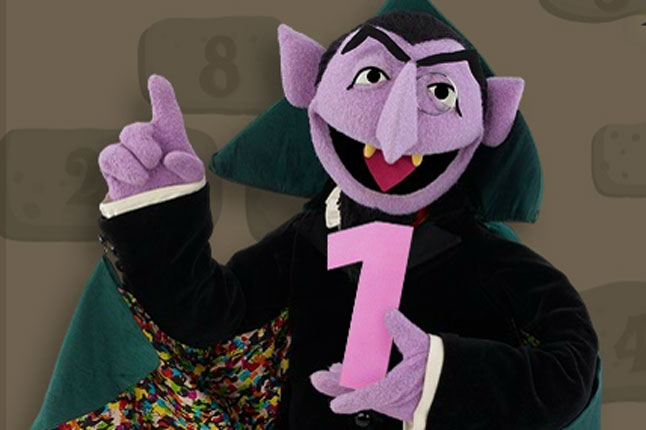An update is long overdue. To cover all that happened in marketing this year, I present to you two blog posts I’ve written for the Overdrive Interactive blog. Check out reviews of search and social in 2014!
3 Marketing Lessons from Mad Men

The following post was originally written for Overdrive Interactive‘s blog. You can view the original post here. I thought it would fit in nicely with Millennial Morph’s theme of evolving marketing methods (and continually highlighting instances of dated marketing tactics).
This post also contains some spoilers about the first and second seasons of Mad Men. If you wish to remain unspoiled, do not continue reading.
On the surface, Mad Men is a show about the advertising industry in the 1960s. However, watch a few episodes and it becomes clear that what the show’s really about is change. Specifically, just how different things were over 50 years ago. It’s almost shocking to see what was acceptable back then, especially when it comes to issues like race, gender equality and the prevalence of smoking indoors. While the show’s characters are strictly in advertising, there are several moments when it’s clear how much things have also changed when it comes to branding, public relations and marketing (not that any of those fields were back then what they are today).
There’s plenty of examples in Mad Men of dated marketing methods that just wouldn’t work today.
Absence is Louder Than Words: Boston Mayor’s AMA
An apology for the lull in posts. I recently started as a social media specialist at the digital marketing agency Overdrive Interactive, and my efforts lately have been focused on their own blog.
With that in mind, I’d like to share a recent post I created for them that heavily focuses on the Millennial audience. If you’re unfamiliar, Reddit’s AMA (short for “ask me anything”) is a popular place for public figures to reach a younger audience through an open and candid online question and answer session. But things don’t always go as planned, as was the case with Boston Mayor Marty Walsh’s AMA the other week.
Read more on Overdrive’s blog.
4 Things to Keep in Mind When Marketing on Facebook
It’s hard to deny Facebook’s immense popularity, especially among Millennials. So it makes sense that if you want to market to that group, Facebook is the best way to reach them. This post by Nanigans (creators of a performance marketing platform) illustrates some effective ways to to harness the social network’s marketing potential. However, there are a few things to keep in mind before diving into all the ways to market through Facebook.
5 Reasons Why Numbered Lists Are So Appealing
I won’t lie to you. I initially started writing this as a joke (“a numbered list about numbered lists? How meta! This will be hilarious!”). But the more I thought about it, the more I realized there was more to this. Nowadays you can’t go online without running into a blog post in this format. Hell, Buzzfeed built an entire business model on it. So why have numbered lists become such an internet standard? Well hey, here’s a numbered list to explain just that!
Check Out My Post For Ramp
I recently created a post for the blog of Ramp, a company that has developed the next generation of search and video experiences to make video valuable . Entitled “4 Ways to Make Your Video Content Super Bowl-Worthy”, it teaches readers how to take a page from Super Bowl ads to make content that is exciting, snappy and memorable. And while that content may be targeted towards a broader audience, everything there still applies to making content that would be appealing to a Millennial audience.
3 Reasons Why Old is the New “New”
In an age of rapid technological advancement, it may sound crazy to say that vintage is highly valued.
But it is.

UPDATE: The Don’t of Social Media and Social Activism
Last week, I wrote about bad tactics when generating social activism through social media. Well, it looks like Millennials aren’t the only ones against these “retweet to help” techniques.
Tweeting under the handle @KelloggsUK the cereal company posted ‘1 RT = 1 breakfast for a vulnerable child’ on Saturday as part of its Give a Child a Breakfast campaign.This enraged some followers with many pointing out that it seemed to suggest the company would only be donating breakfasts to vulnerable children if the initiative received sufficient publicity.
The tweet has since been deleted, and Kellogg’s has apologized.
The Importance of Being Human
Despite what the Supreme Court may say, businesses are not people. Or they’re not in Millennials’ eyes. We came of age in an era where the evil of “the man” was everywhere (Enron, the recession, Super PACs). One of the causes in the Occupy Wallstreet movement (among many others) was pushing to decrease corporations’ stranglehold on the country.
Furthermore, there’s a been a recent movement celebrating local, independent businesses. And it makes sense. Which would you rather give your money to: a faceless machine of a corporation bent on world domination? Or a business where you know the owner and know the goal is to simply make a quality product and succeed?
Long story short: Be a person. There’s plenty of times where doing so was met with resounding appreciation.
Social Media and Social Activism: What Not to Do

@Kia_Motors Tweeted this photo last year with the description “‘like’ this photo to stop her tears. Your single click is her crying hope for life”.
We’ve all been there. We’ve all opened up Facebook to a post like the one above. And if you’re like me, you probably cringed.
After all, no one wants to see a post implying that a child will starve to death unless a photo gets a certain amount of ‘likes’. It’s not just ridiculous, it reeks of condescension. And media-savvy Millennials are all too aware of these manipulative undertones.


